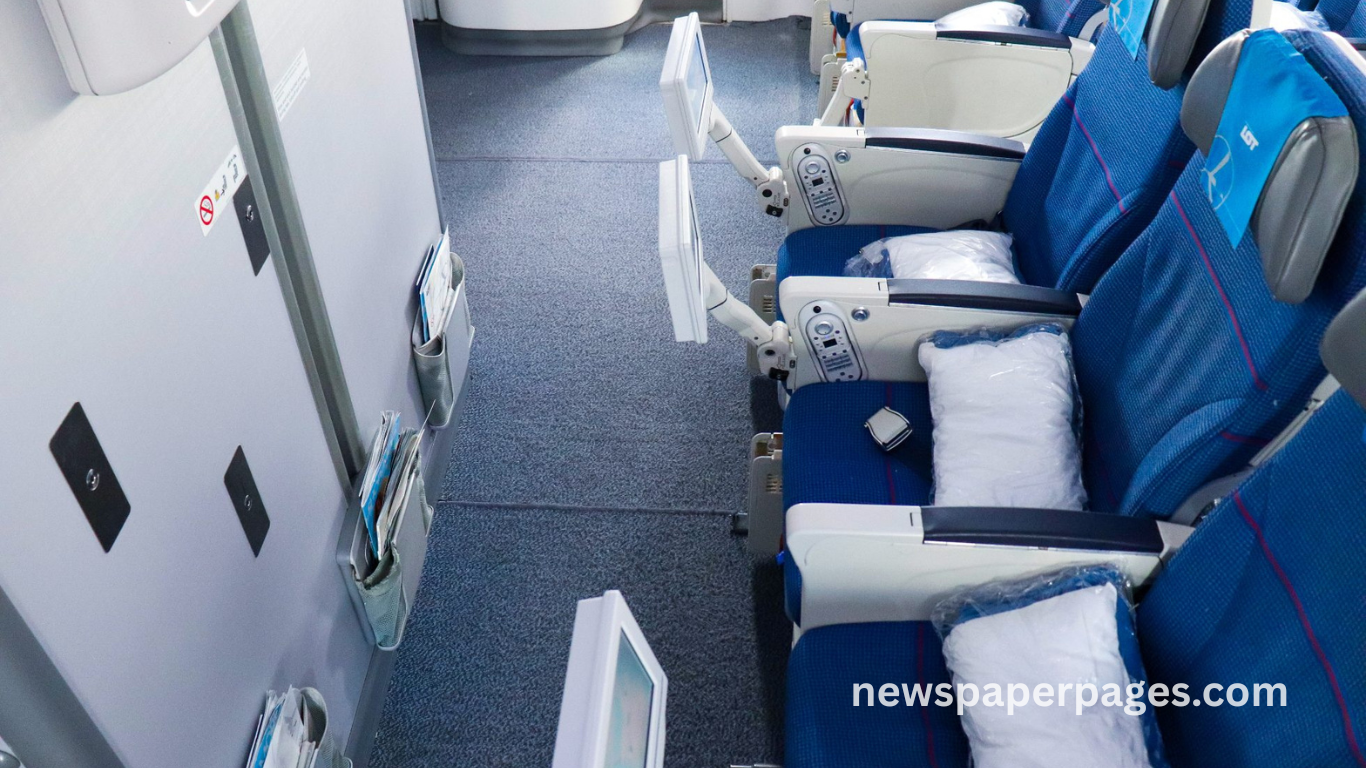Flying can be a mixed bag—sometimes it’s smooth sailing, other times it feels like you’ve drawn the short straw with your seat. As someone who travels frequently, I’m always on the lookout for minor upgrades that can make a big difference. So, when Southwest Airlines rolled out its new extra-legroom seating, I had to try it for myself.
On a recent cross-country flight, I managed to snag one of these seats. What followed was a significantly more comfortable journey and a deeper understanding of what this new offering means for Southwest passengers. In this article, I’ll share my firsthand experience and everything you need to know about this new seat option—from how to get one to whether it’s worth the hype.
What Are Southwest’s Extra-Legroom Seats?
Southwest’s extra-legroom seats are part of the airline’s effort to enhance passenger comfort while retaining its core identity as a budget-friendly carrier. These seats offer additional inches of legroom—typically 34 to 36 inches of seat pitch compared to the standard 31 inches. They’re primarily located in the front rows and exit rows.
These aren’t first-class seats, but they strike an outstanding balance between affordability and comfort. While the airline still follows its no-assigned-seating policy, these seats are more accessible to those with early boarding privileges or those who upgrade to EarlyBird Check-In.
How I Managed to Get One of These Seats
Getting an extra-legroom seat on Southwest isn’t like selecting a premium seat on other airlines—you don’t book it directly. Instead, a boarding order is key. I purchased the EarlyBird Check-In add-on for my flight, which automatically checked me in earlier than most passengers, securing me a better boarding group.
Once onboard, I headed straight for an exit row—one of the zones where these extra-legroom seats are located. Since Southwest has an open seating policy, these seats are first-come, first-served, and you’ll need to board early to grab one. My strategy paid off, and I settled into a spacious exit-row seat with plenty of room to stretch out.
Comfort and Space: What It’s Really Like
The difference was immediately noticeable. My knees weren’t anywhere near the seat in front of me, and I could easily cross my legs without feeling cramped. For someone of average height (I’m 5’10”), the extra space turned what would have been a routine flight into a genuinely comfortable experience.
Southwest doesn’t offer luxury upgrades, but this modest improvement felt luxurious in its own right. There was also a psychological boost—being in the front third of the cabin just feels better. It’s quieter, quicker for deplaning, and gives a general sense of premium travel.
How These Seats Compare to Other Airlines
When comparing these seats to similar offerings from other carriers, it’s clear that Southwest is bridging a unique gap. Legacy airlines like Delta and American offer “Main Cabin Extra” or “Comfort+” seats, but they come with added fees and assigned seating. JetBlue’s “Even More Space” is another close competitor, offering even more pitch—but usually at a steeper cost.
Southwest’s solution retains flexibility while delivering enhanced comfort. There’s no additional charge for the seat itself, but EarlyBird Check-In or A-List status improves your chances of getting one, indirectly monetizing the upgrade. It’s a clever compromise between low-cost and premium services.
Read More : The High-School Juniors With $70,000-a-Year Job Offers
Who Can Benefit the Most from These Seats
Tall travelers are the obvious winners here. If you’re over six feet tall, the standard economy layout can feel suffocating, and these seats offer much-needed relief. Frequent flyers and business travelers who value comfort without splurging on business class will also appreciate the added space.
Parents traveling with kids may find the extra room helpful in maneuvering and managing carry-ons. Similarly, older travelers or those with minor mobility issues will enjoy easier access and stretch rooms. However, exit row seats come with restrictions—passengers must be physically able to assist in an emergency, so not everyone qualifies.
Cost vs. Value: Is It Worth It?
Since you’re not paying directly for the seat but instead optimizing your chances of boarding early, the cost-to-value ratio is favorable. I spent about $25 for EarlyBird Check-In. For that price, I got a significantly more comfortable ride, early access to overhead bins, and a faster exit from the plane.
In terms of value, it’s hard to beat. You’re essentially paying a modest premium for an economy experience that feels more premium. If comfort matters to you, especially on longer routes, this small investment is more than worth it.
Tips to Secure an Extra-Legroom Seat on Southwest
- Purchase EarlyBird Check-In: Automatically checks you in 36 hours before the flight, improving your boarding group number.
- Check-In Right at 24 Hours: If you didn’t get EarlyBird, manual check-in at the earliest possible time is your next best shot.
- Board Strategically: Head straight for the exit rows or bulkhead seats, which usually have more space.
- Fly During Off-Peak Hours: Less crowded flights increase your chances of snagging one of these seats.
- Earn A-List Status: Frequent flyers get priority boarding, improving seat selection opportunities.
Impact on the Southwest Travel Experience
This minor tweak in seating configuration signals a broader shift in Southwest’s customer service philosophy. While the airline remains proudly no-frills, it’s now acknowledging that comfort matters. The extra-legroom option doesn’t fundamentally alter Southwest’s identity, but it enhances the value proposition for budget-conscious travelers.
More importantly, it sets a precedent. As consumer expectations rise, airlines will need to adapt, and Southwest is doing just that—on its own terms. This move could pave the way for further soft product enhancements, all without disrupting their operational model.
Passenger Reactions and Feedback
Since the rollout, frequent flyers have mainly shared positive feedback. Many have expressed surprise and appreciation for the added comfort, while others have found new incentives to invest in EarlyBird Check-In. Social media buzz and travel blogs are praising the move as a win-win for passengers.
Of course, some travelers worry that the competition for these seats could intensify. With more people aware of the benefits, securing one could become more arduous. But overall, the sentiment is positive—Southwest has found a way to enhance the experience without alienating its core customer base.
What This Could Mean for the Future of Southwest
As customer demand evolves, Southwest’s extra-legroom initiative may lead to more tiered services. While still maintaining its egalitarian seating policy, the airline might explore new ways to monetize comfort without compromising its low-cost structure.
We could see tech upgrades allowing pre-selection of specific seats or bundled packages that include EarlyBird Check-In with Wi-Fi and priority boarding. If done right, this could enhance revenue and customer satisfaction simultaneously.
Frequently Asked Questions
Does Southwest charge extra for extra legroom seats?
No, there is no direct charge. However, getting these seats often requires early boarding, which may involve a fee for EarlyBird Check-In.
Where are Southwest’s extra-legroom seats located?
They’re typically found in exit rows and bulkhead seats near the front of the aircraft.
Can I reserve an extra-legroom seat in advance?
No, Southwest has an open seating policy. Seats are chosen on a first-come, first-served basis.
Is EarlyBird Check-In worth it for extra-legroom seats?
Yes, it increases your chance of boarding early and securing a better seat.
Are there any restrictions on exit row seats?
Yes, passengers must be able to assist in an emergency and meet age and mobility requirements.
Do A-List members automatically get extra-legroom seats?
Not automatically, but A-List members board earlier and thus have better access to these seats.
How much legroom do these seats offer compared to regular ones?
Extra-legroom seats offer about 3–5 more inches of pitch than standard seats.
Are there any downsides to these seats?
Exit row seats may have limited recline or fixed armrests. They’re also more competitive to claim.
Conclusion
Snagging one of Southwest’s new extra-legroom seats turned an ordinary flight into a notably more comfortable experience. With thoughtful planning and a small investment in early check-in, you, too, can upgrade your journey. It’s a savvy traveler’s secret—worth exploring on your next Southwest trip.

